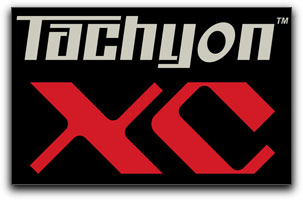

April 4, 2011
Tachyon XC HD Camcorder
http://www.tachyoninc.com/ - $179.99
HD 3D Video System $389.99
Review by Steve Douglas
A cottage industry of relatively high performance, low cost POV camcorders have hit the market with lightening speed tapping into the great flexibility, and previously ultra expensiveness, that these tiny camcorders now easily fulfill.
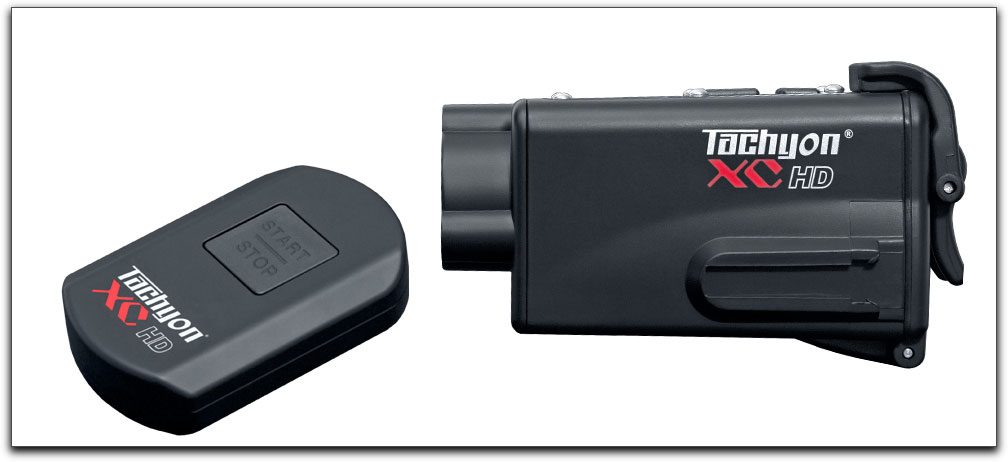
The Tachyon XC HD Camcorder is the latest I have had the opportunity to use and review. It is one very well made cam weighing only about 4 ounces but designed to withstand rough handling and extreme temperatures.
Hand holding a cam this small and lightweight is difficult as even the slightest movement clearly shows shake. That is to be expected with any lightweight cam. Fortunately, there are a large variety of mounts and accessories to help the user. There is a mount for a rifle barrel, a tripod, handlebar mounts for bikes or motorcycles, side mounts for goggles or diving masks and even some 3M Dual locking fastening strip.
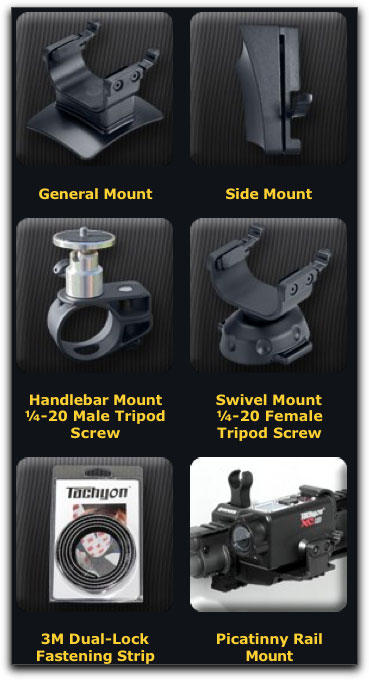
The Tachyon XCHD cam already comes with a general mount, a side mount, a remote control, 12" strip of fastening tape, two plastic paint ball lens protectors, an A/V cable to connect directly into your HD monitor and a USB cable to connect to your computer.
In the interest of 'Going Green', no manual comes with the Tachyon, but there is one which can be downloaded from their website. Of course, printing it up will defeat the 'going green' principal so the dime is on you, however, you can also download the PDF version of the manual on your smartphone and view it that way.
Tachyon strongly recommends using either a class 6 or higher SDHC card to prevent file corruption and just as strongly recommends the use of Energizer Ultimate Lithium AA batteries which will provide about 6 hours of shooting time. The manual states that the cam's auto save feature was designed for the Lithium batteries and you should never use the Energizer Titanium batteries, some manufacturers alkaline batteries and 'Never' to use rechargeable batteries because, when they lose power, they can cause SDHC card corruption. Tachyon states their concern that some rechargeable batteries are too large and simply have a voltage that is too high for XC HD cam with voltages at 3.6 volts. I checked my frequently used Duracell and Radio-Shack AA rechargeables and both brands list their voltage as 1.2. Never the less, I did not try to use my rechargeables with the Tachyon XC HD cam.
The Tachyon XC HD Camcorder has a very neat LCD display that shows the footage countdown in seconds, power remaining and card room remaining. The power on and off button as well as the start/stop record buttons take a firm push to activate. This is a good thing avoiding inadvertent pressing of these buttons and stopping the action which could have gone on unnoticed.
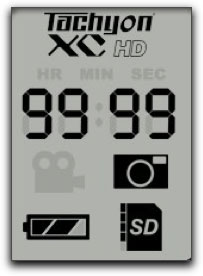
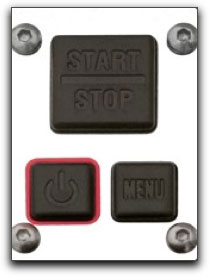
When you begin to shoot a green 'power on' LED on the front of the cam flashes over to red. Once you press to stop the recording the top screen displays a 'Save' message telling you that your footage has been saved to the card. For surreptitious filming, I would have preferred the LEDs to be in the back of the cam so I could film in a museum when I am not supposed to, though covering the front LEDs with black electrical tape is easy enough to do and would accomplish the same thing.
The Tachyon's lens provides 120° of wide angle viewing. This creates a bit of a fisheye lens appearance in the footage that I have found to be typical of this type of POV cam, but there is no extreme distortion present so the footage can be used in a number of different types of productions.
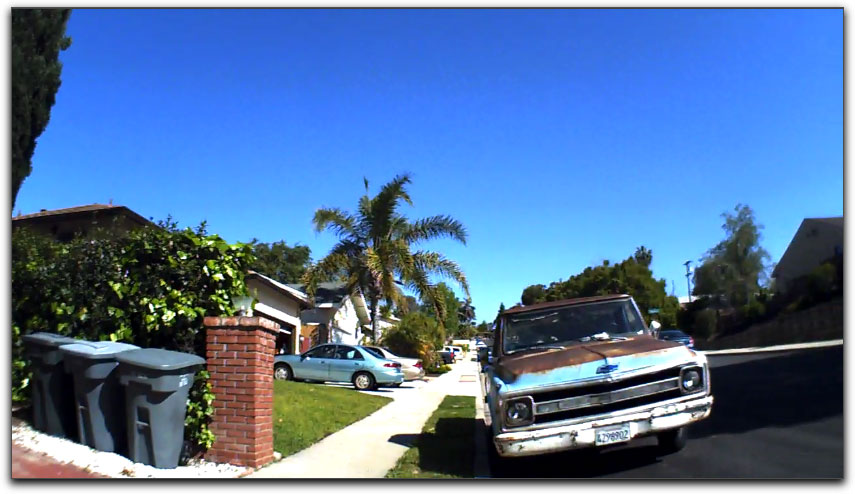
A touch of the fisheye but no real distortion and decent color saturation on this untouched clip.
I did find that the sensor was very sensitive to light changes which were clearly visible in many of the test clips as I wandered around my front yard turning away from the sun, towards the shade and slowly panning and tilting in different light conditions.
The footage is shot in the 720p format at 30 fps. This is a true 30 frames per second and not the standard NTSC 29.97 fps. This means that if you want to synch the footage to any dialogue from an external microphone or to use it in a standard 29.97fps sequence you would need to use Apple's Compressor or Adobe's Encoder to change the frame rate to match your sequence. Canon, when they came out with their DSLR 5D camera discovered that they had made a similar error which they corrected with a firmware update. It is my hope that Tachyon does the same thing. I do not know, yet, how Tachyon will notify buyers of any firmware updates should they become available.
The XC HD camcorder is very susceptible to handling noise so a mount will be necessary for most instances. However, you do not buy a cam of this type for its audio capabilities. In fact, the Tachyon's microphone is actually sealed by the cam's own back cover within the case. If you pick up someone speaking it will sound quite muffled. Should you open up the back closure, the audio certainly brightens up, but keeping it open defeats the purpose of the closed door which protects the battery, microphone and SDHC card.
The Tachyon XC HD followed movement quite well. A car speeding down the street caused no artifacts or blurring. Mounted on bike or helmet, the footage produced would be of very acceptable quality providing that the light sources were constant. Even then, you could cut out the bad parts, that's what editing is all about.
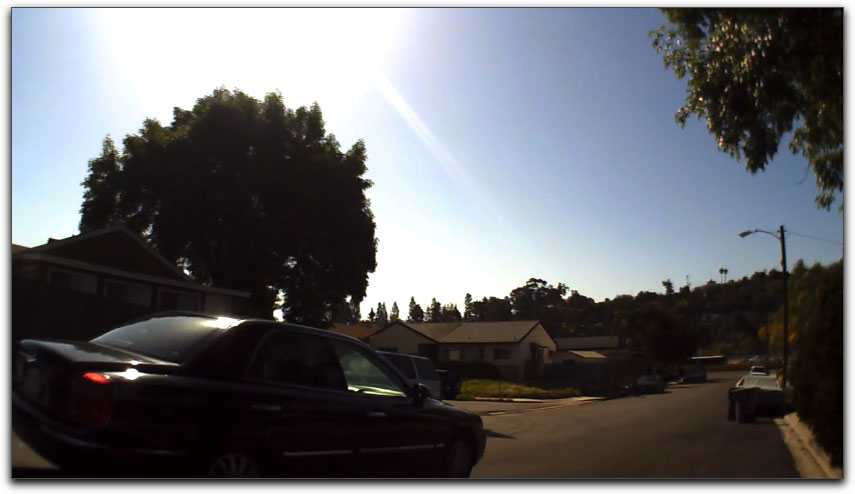
Yes, I know I am shooting into the sun,(no emails about this please) but the car retains its form and there is no break up of the image.
For underwater shooters, the Tachyon XC HD cam is good to go down to a depth of 100 feet (30.5 meters, about 4 atmospheres) and will film for a maximum of 30 minutes. You do not need an extra housing for this. Inside the back cover is a 'lock/unlock' switch. Move the switch to Lock and the housing will now be completely waterproof. Herein lies a problem. Most scuba divers, depending upon water temperature, dive location and air consumption, make dives which will last anywhere between 40 minutes to an hour or more. Once you have made the switch to the 'lock' position for diving, and start the record button, you cannot stop the recording. You must wait until you are out of the water, have dried off the Tachyon, opened the back cover and moved the switch back to the unlock position. Only then can you stop the recording. As a long time underwater shooter, I may go 20 minutes between shooting new clips as I explore the depths. If I can't stop the recording I will have used up the capacity on my SDHC card and shot an awful lot of unnecessary and unwanted footage. The camera is already waterproof. The lock/unlock switch for diving only prevents the water pressure from depressing the buttons, turning the video off. You do not have to use the switch, it is mostly used when going down to deep depths. If you are wading or snorkeling, there is no need for the lock.
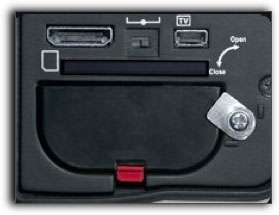
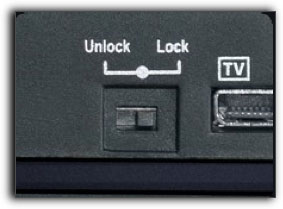
A closer look at the Tachyon's XC HD back , when uncovered, and the lock on/off switch for those who plan to snorkel, surf or scuba dive.
When your shooting is done, it is always best to download your files to your computer, and make sure they are backed up before deleting clips from your SDHC card.
I connected the XC HD cam to my Mac Pro and the cam mounted on my desktop just as it was supposed to do. I then opened Final Cut Pro and the Log and Transfer Window. While I could direct FCP to the mounted cam, Final Cut Pro would not allow me to transfer the video files. Depending upon which file I tried to direct Final Cut to, I would only get one of two different warnings.

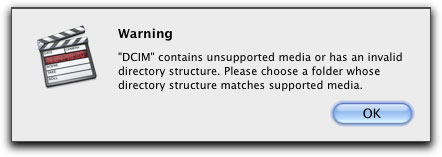
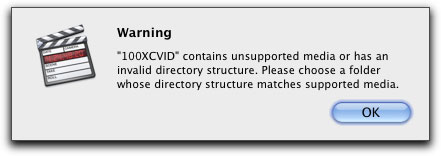
Not a problem, I will open the video files in MPEG Streamclip as it seems to work with any format and I can always transcode the footage to ProRes while I am at it. Unfortunately, it wouldn't work and only produced a QT clip with no video and just a white screen. I called the support representative at Tachyon who recommended using either the VLC or the FLV Crunch applications. Both of these converter applications are free to download. VLC was just useless, however, the FLV Crunch Converter allowed me to drag a clip into the interface and change the format to Quicktime, which, from there, I could export into the codec of my choice whether it be Pro Res 422 or whatever other codec I might want.
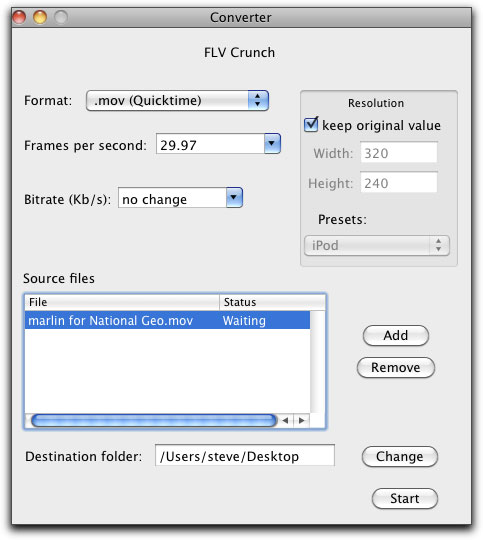
FLV Crunch presents a simple interface where you can drag a clip, change the format and frame rate and export.
From here you can take the clip either to MPEG Streamclip or Quicktime.
Another method of importing that might be simpler yet, is to use iMovie which imported footage from the Tachyon XC HD cam without any difficulty. Since iMovie is limited in the amount of codecs it offers, should you be doing most of your editing in Final Cut Pro, you will still need to export the footage from within iMovie and convert it in Quicktime to a more preferred codec or you can stick with iMovies AIC codec which works well in Final Cut Pro and would not need transcoding.
For those just starting in the nascent world of 3D, Tachyon also produces a side by side mount for 2 of the XC HD cams. At this time, I am unsure of the convergence angle and though they are based in Texas, with most of their support personal occupied with the unfortunate recent occurrences in Japan, I decided to put off delving into the use of the Tachyon's cams for 3D purposes for now.
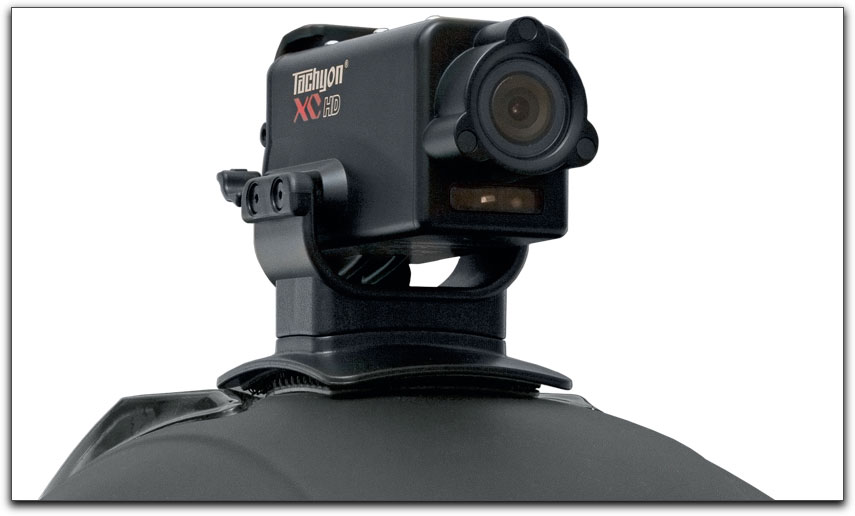
Over all, the Tachyon XC HD cam is a very well built, sturdy camcorder. I loved the LDC screen that provides you with battery and card information and keeps you apprised of how much footage you are shooting and for how long. While there is no monitor, making clip composition a point, shoot and hope it is decently framed situation, the durable Tachyon XC HD cam is built to take the abuse that vibrations can cause and is certainly not too costly.
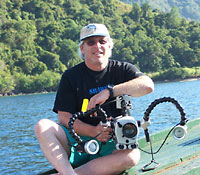
Steve Douglas is a certified Apple Pro for Final Cut Pro 7 and underwater videographer. A winner of the 1999 Pacific Coast Underwater Film Competition, 2003 IVIE competition, 2004 Los Angeles Underwater Photographic competition, and the prestigious 2005 International Beneath the Sea Film Competition, where he also won the Stan Waterman Award for Excellence in Underwater Videography and 'Diver of the Year', Steve was a safety diver on the feature film "The Deep Blue Sea", contributed footage to the Seaworld Park's Atlantis production, and productions for National Geographic and the History channels. Steve was a feature writer for Asian Diver Magazine and is one of the founding organizers of the San Diego UnderSea Film Exhibition. He is available for both private and group seminars for Final Cut Pro and leads underwater filming expeditions and African safaris with upcoming excursions to the Cocos Islands, Costa Rica, and Hawaii. Feel free to contact him if you are interested in joining Steve on any of these exciting trips. www.worldfilmsandtravel.com
[Top]
copyright © Steve Douglas 2011
© 2000 -2011 Ken Stone. All rights reserved. Apple, the Apple logo, Final
Cut Pro, Macintosh and Power Mac
are either registered trademarks or trademarks of Apple. Other
company and product names may be trademarks of their respective
owners.
All screen captures, images, and textual references are the property and trademark of their creators/owners/publishers.

















